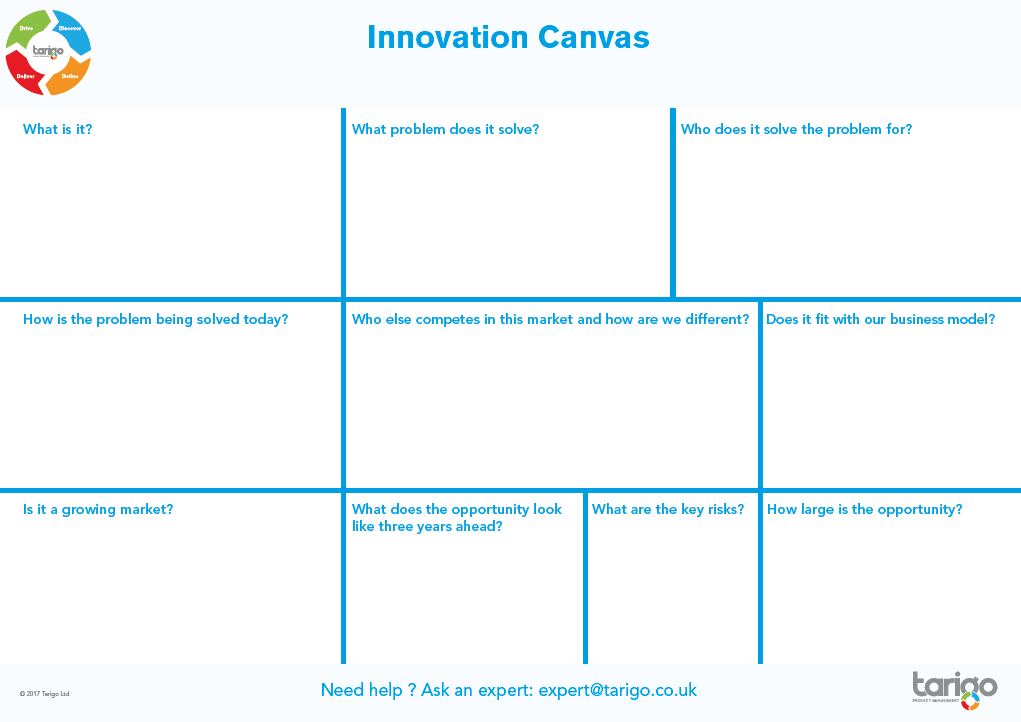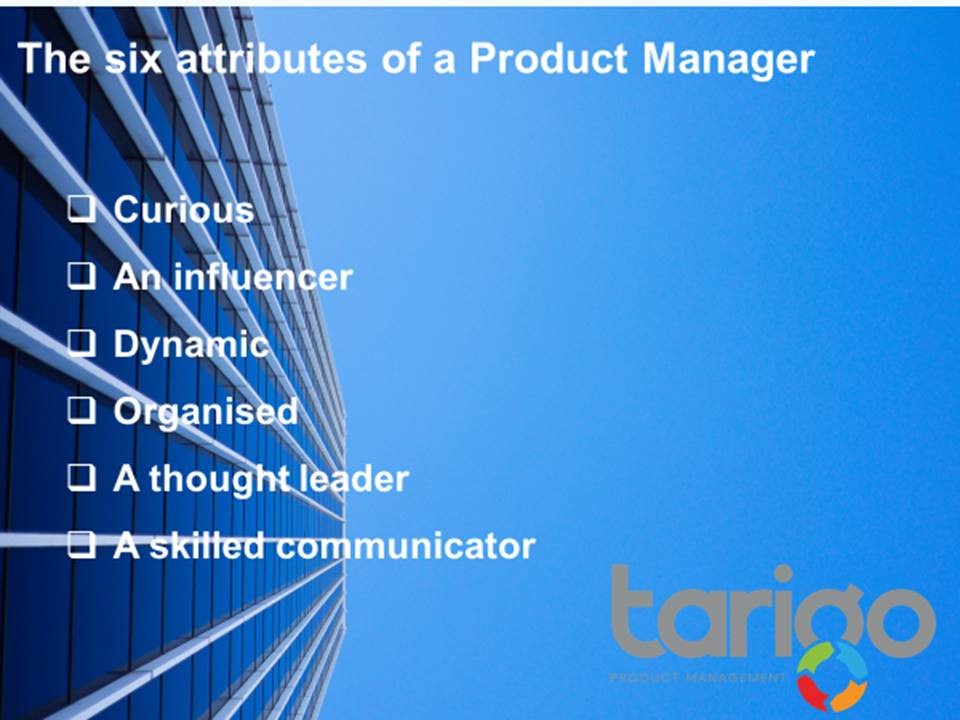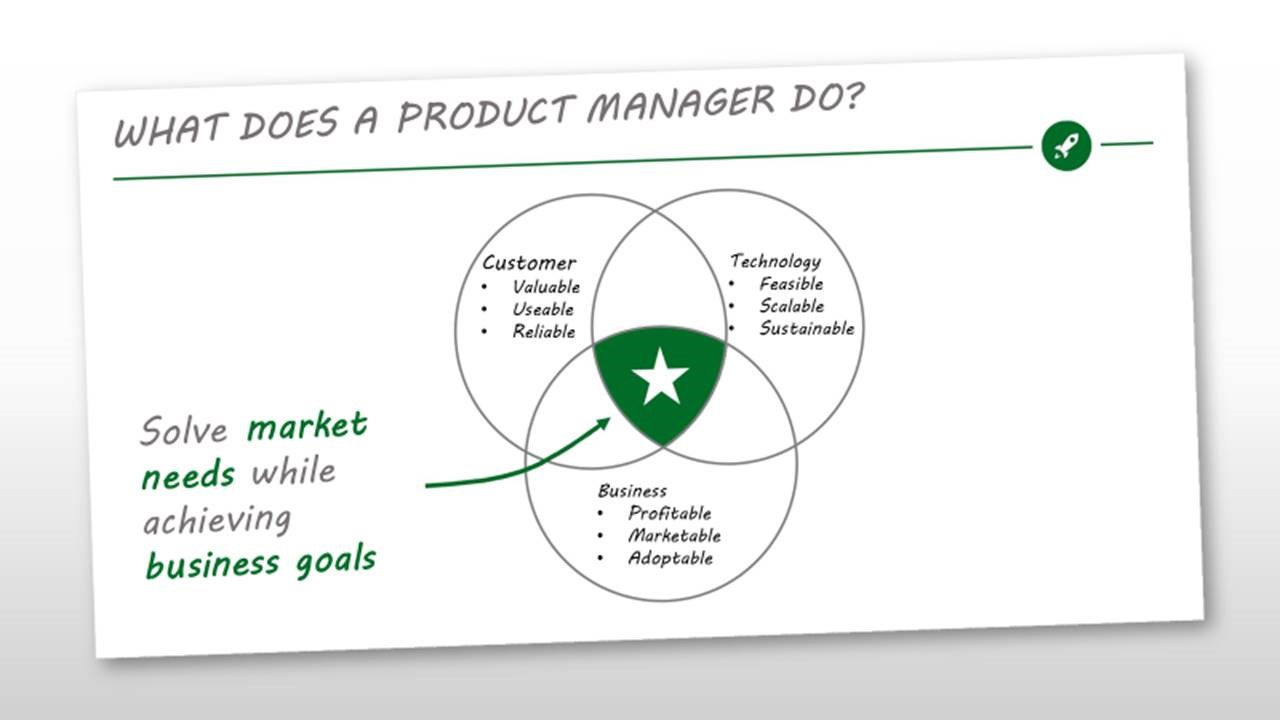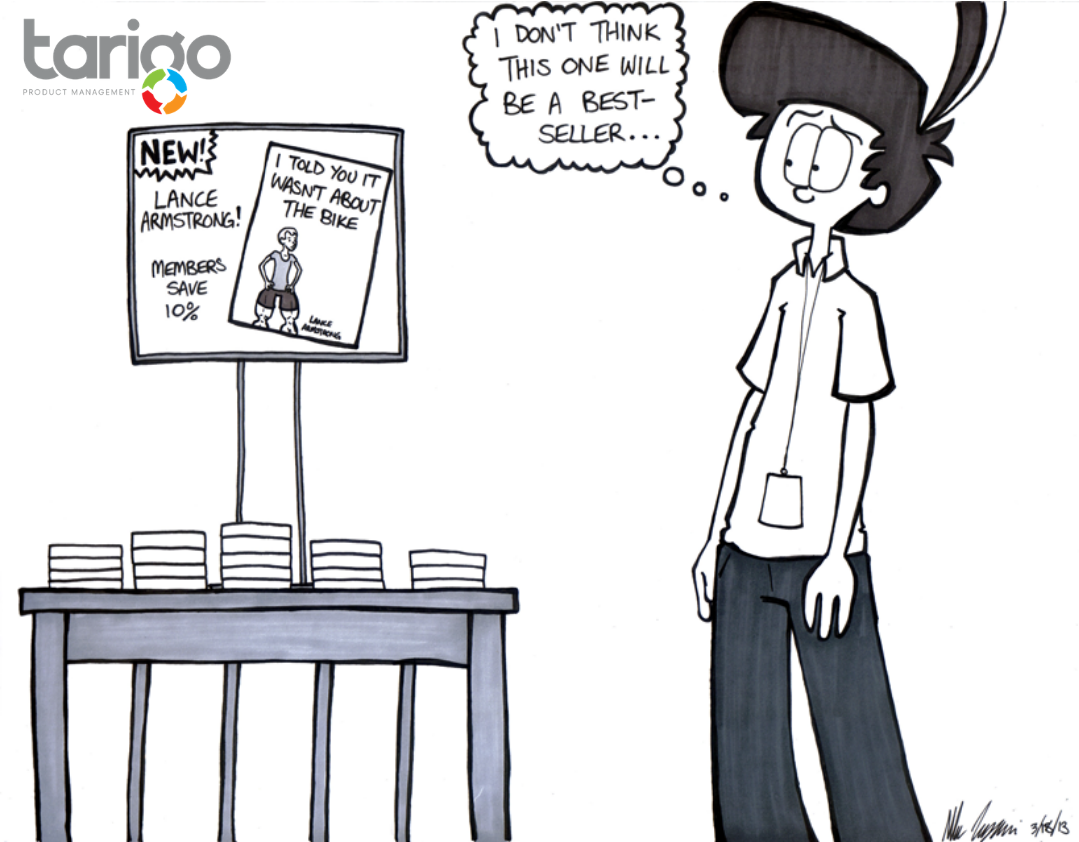Your daily dose of Product Management Goodness
Want to know more?
We would love to hear your questions and suggestions for topics you would like to see covered in our future blog posts, so don't be shy and get in touch!


Learning on demand
“Knowledge is power” goes the old adage.
Most Product Managers I meet have an appetite to learn – we’re an intellectually inquisitive bunch! But as a product management trainer I have this dilemma; we immerse teams in the whole Product management process from ideation through to retirement in the sure knowledge that most of the team won’t use most of the learning in the next few months. They’ll focus on the topics that directly impact their immediate work and forget the rest. It’s a completely rational response, but it highlights a real issue; learning and work are out of sync.
So how can we address this?
Our response is Product Management Central – Our online platform that breaks product management work down into a set of skills that you can learn at your own pace through videos, papers, webinars and blogs, and at a time that suits you. Learn what you need to learn, when you need to learn it. Lets adapt the original quote to 21st century product management “Knowledge is power, but gaining knowledge at the right time makes it more useful”
read more

Don’t overload you presentation
I’ve just sat through presentation torture – a product manager with slides full of 10 point font! It was an hour of staring at the back of a the persons head as they read their own slides. I understand why this happens - nervousness. They think “I’ll never remember everything I need to say so I’ll write in it the deck as support”. But the problem when they present is that either the audience just read the slides or the presenter reads for them - both are pretty dull and completely unengaging.
Remember, slide decks are a presentation aid, they do not tell the full story and probably make little sense without the presenter. So use them as an aid – three or four big statements per slide that gives your presentation structure and direction.
read more

Marginal Gain
How can we as Product Managers use marginal gain to ensure we always stay ahead of our competitors ?
First gaining prominence with Sir Dave Brailsford, Performance Director for Team Sky, the UK’s professional cycling team, he pushed the team to search for the 1% in hundreds of tiny areas that were overlooked by their competitors: they looked at more obscure areas such as taking their favourite pillows on tour to get the best night’s sleep and teaching riders how to wash their hands to avoid illness and time off training. They were relentless in their pursuit of marginal gains and it paid off.
What can we learn from this? Lots of small gains that in isolation mean nothing can add up to remarkable aggregate improvements over time. Think of apple and blackberry handsets – a product that is marginally better across the piece translates into a hugely dominant market performance.
Marginal gains in your product can mean the difference between success and failure, because when product deals are won, it can be on the smallest of margins.
read more

Getting to ‘no’
Sales teams often talk about ‘getting to yes’, but for Product Managers I’d argue that getting to ‘no’ is just as important when managing new ideas. In fact, getting to ‘no’ quickly and cleanly is a really useful skill. I’ve lost count of the number of times I’ve seen products blown off course by deals being won that created more distraction than dollars – dev teams burning huge resource to try and fit what’s been sold into what’s already been built.
The key to rejection is to act quickly (wait too long and expectation builds) and logically (saying ‘no’ without rationale just won’t work).
My advice? ASAP spend 20 minutes with an innovation canvas and establish if that new idea really makes sense before support for it builds – a fast ‘no’ is so much more positive than a slow and reluctant ‘perhaps’.
read more

Getting your message across
I’m working with a team on messaging this week. I’m struck by how complicated many product managers make their message – I often have to spend an hour trawling through brochures and slides to get any sense of their product and I’m told ‘it’s complicated’ . Think of this from a customer perspective – if your product doesn’t grab their attention immediately then they’ll move on – they’re busy people with a thousand other things to do. To fix this, think of a newspaper article – great content is wasted if there isn’t a compelling headline to draw you in or an image that captures your attention. When messaging to customers make those first ten words count!
read more

Customer Domination
How much of your customers day is consumed with activities that involve your product or service?
Imagine you build a successful product that help shopkeepers manage inventory. A typical train of thought for the Product Manager looking for growth is “Who else has an inventory problem that I can sell to”. This is completely valid, but you could also look for growth by answering a different question “What else keeps shopkeepers busy?”. The downside of this is pretty obvious – you’ll need new products to meet the new needs you identify. But before you discount it, think about the cost of taking your ‘off -the-shelf’ product to a new market – there’s likely to be development costs, plus building channels and reputation is an expensive business. It’s always tempting to look at customer wins as flags on a map when in reality what we’ve won is a small share of their spend by solving a small problem in their world – we’ve not planted a flag, we’ve secured a small piece of the pie.
read more

Product Management potential
Question: How can you spot Product Management potential?
You know the type of scenario – that person who’s doing a great job in support/presales/etc is looking for a move, has no Product Management background, but do they have potential? Here are the six attributes to look for:
Curiosity - Has a natural curiosity for the product and eager to dive into the details (technology, markets, regulation, customers, competitors, etc).
An influencer - Is an Influencing and inspiring individual who is through their charismatic attitude able to drive and lead progress whilst creating a positive working environment.
Dynamic – They are a proactive problem solver, with a can-do attitude and can take the team with them.
Organised - Is disciplined and organised. They have a structured approach and utilise process effectively to get the job done. They are structured in their way of managing information.
A thought leader - Is able to distil complex information down into an insightful and compelling narrative..
A skilled communicator - Needs to be clear, concise and credible in their communication, being able to deliver a message in a few words with complete clarity.
read more

Lessons from Donald
I’ve been working with a Product Management team, helping them sharpen their product positioning because it was too vague and vanilla – it tried to please everyone and ended up appealing to no-one.. Simple question from the team “who gets this right” got a response they didn’t expect – Donald Trump. Let me explain.
1. Love him or hate him, you know what he stands for. Make America great again, Build a wall…. He has his messaging pillars in place and he sticks with them.
2. He knows who is target audience and he speaks to them and only them .
3. Critically, he knows who is target audience isn’t and he never tries to appease them. He actually never speaks to them (he might stand in front of them and talk, but he is always speaking to his target audience)
Think of this in product terms. We sometimes miss steps 1 and 2. – we don’t have our messaging pillars in place or our target market clearly identified so our market has no idea what we stand for. But even when we get steps 1 and 2 right, we often blow it at step 3 – we try to appeal to non-target customers, diluting our core message, diverting our development team, and confusing our core market. Of all the things you could catch Donald doing, appeasing his non-target market isn’t one!
read more

What do Product Managers do?
It’s a question we’ve answered many times before, but this was presented to me last week and I thought it was a great way of simply describing our job. We sit at the interface of customers, technology and our company, and we try to deliver solutions that meet a real customer need whilst addressing both the goals of the business and tech capability. Put simply, we solve market needs while achieving business goals.
Thanks to Willem Bekkers for this - a great product guy.
read more

Launch
When do you start to launch your solution?
You are delivering a solution not just a product. A lot of companies make the mistake that they are purely building products and as soon as they are ready, then they can release. But the solution is larger than this, it is scaling your delivery and support teams are ready. This includes:
- Consultants prepared
- Marketing campaigns understood. Advocates ready to help with communication, organise your PR
- Sales enablement complete and sales teams trained
- Support Desk trained and the SLA’s (Service Level agreements) and OLA’s (Operational Level Agreements) are in place
- Product ready. Are you going to trial/pilot?
- Solution feedback mechanisms are in place
- All teams are trained and ready to answer customer queries about the solution, using the right value proposition
As soon as you have had the approval for the project to go ahead, and you have secured the budget for development, the next step is bringing together your stakeholder group from around the company. Build a checklist of all the activities and add owners from the stakeholder group. Have the stakeholders keep you updated with progress, you are not to deliver on their behalf!!
The success of the solution will depend on the support of the business.
read more

Talking the right language
Ever feel your message isn’t getting through to your customer? It could be that the message is wrong, but often it’s not the message, but the delivery – language that doesn’t resonate with your target market. Here’s a simple example; you want to encourage your children to exercise more. Which statement is more likely to work: ‘ Shall we go for a long ride on our bikes to improve our cardiovascular fitness’ or ‘Let’s see who can get muddiest on the canal path!
’’Simple rule of product management – when you talk to your customers, speak in a way that makes sense to them not in language that impresses your boss!
read more

Communicating MVP
Communicating MVP – learning from Brexit.
Brexit was miss sold using indefinite data and promises. During the leave campaign, the ‘350 million pound extra a week for the NHS’ was quickly dismissed as the referendum vote had taken place, despite clear proof of this promise.
So as Product Managers, what can we learn from this?
Having a clearly defined MVP (minimum viable product) is crucial to your credibility and success, especially on large scale projects, like Brexit. See the problem is that so many people of political influence promised so many things that the public then expected to see put in place. Now the mood of the public is tangibly disinterested and untrusting, this is down to a lack of delivery on promises made by influential people that, in reality, had no power to deliver.
Having a clearly defined MVP is a great foundation for communicating your product clearly and accurately to your colleagues and target audience, what you know you can definitely deliver within a set timeframe whilst still maintaining the core customer values. Don’t let other teams within the organisation cloud the public view and set unrealistic expectations.
Don’t lose control of your product, own your product.
read more

Lance Armstrong
Lance Armstrong once wrote a book entitled ‘it’s not about the bike’. Turned out there was more truth in that title than we’d imagined, but ‘It’s not about the product’ would be a good product management book title.
Working with a new team today on a go to market plan and they were surprised how much of product management is not about the product. It’s so true. Think about a launch plan - it shines a light on this and shows that to launch well you must have a product, but you also need legals, messaging, sales plans, support, pricing, etc. Great products need lots of rounding out to be world class propositions.
read more

The 80:20 Rule of Prod Mgnt
The 80:20 rule of product management
There’s snow across quite a bit of the uk right now. Not snow like our Scandinavian friends would recognise (we’ve barely enough to build a snowman in most places), but enough to bring our trains and planes to a grinding halt. Across the UK you’ll get a typical reaction. “Why does one centimetre of snow stop our country when many regions have months of more severe weather each year and seem to manage!” The answer lies in that response. If your country has three months of snow each year then you need to invest to manage it. If your country has maybe a day or two each year, perhaps it’s not worth the investment. Think of that with your products – don’t focus on the edge case condition or edge case customer, build for the majority of your market.
read more
Check out the Archive